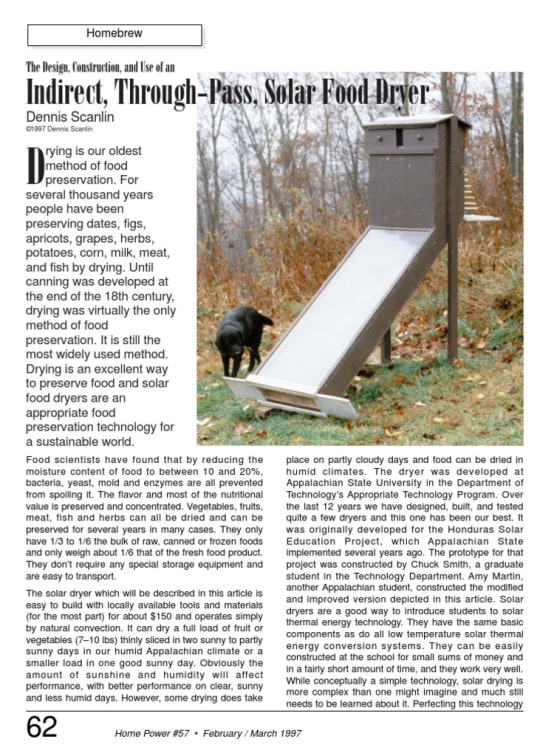The Design, Construction, and Use of an Indirect, Through-Pass, Solar Food Dryer
At a glance..
The solar dryer which will be described in this article is easy to build with locally available tools and materials (for the most part) for about $150 and operates simply by natural convection.
The details..
Homebrew by Dennis Scanlin is a comprehensive guide to building your own solar food dryer. The author explains how drying has been used as our oldest method of preserving food for several thousand years before canning was developed in the 18th century. Drying remains one of the most widely used methods of preservation today because it preserves flavor and nutritional value while reducing bulkiness and weight.
The book describes how to build an efficient solar dryer that operates simply by natural convection without any special storage equipment required. The design uses locally available tools and materials (for the most part) costing around $150 only! With this easy-to-build device, you can dry fruits or vegetables thinly sliced in just two sunny days even in humid climates.
Factors affecting food drying are discussed including temperature, humidity, air flow which interact with each other during different stages of drying process. Temperature plays a crucial role where higher temperatures increase speed but must be kept below cooking point (180F). Recommended temperatures vary depending on what kind of foods being dried such as meat(140-150F), fish(no higher than 131F), herbs(95-105F) etc.
This book also includes charts showing obtainable temperatures from their Appalachian Dryer model along with recommended drying temperatures for various types of foods like Fruits & Vegetables:100-130F; Meat:140-150 F; Fish:no higher than 131 F; Herbs:95 -105 F etc., making it easier to use this information when preparing meals.
